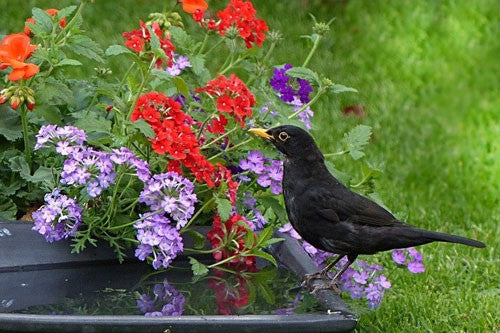
How Water Helps Wildlife: Tips for Creating a Water-Friendly Habitat
Share
Wildlife cannot live without water and UK homeowners are being urged to help newts, frogs and hedgehogs by installing a garden pond or simply filling an old sink, bowl or bath with water.

Water is a necessity for small mammals and amphibians but unfortunately house designers and builders now very rarely include them in their garden plans. It is thought that health and safety fears have led to a large number of ponds being filled in.
Constructing a pond allows amphibians somewhere to breed, feed and shelter. They can be an appealing focal point in your garden and a sanctuary for wildlife. Only basic equipment is required such as:-

Even the cheapest of container ponds will quickly become home to many creatures who reside in water habitats.
A garden pond can be built at any time during the year. If you decide to create a larger pond autumn is an ideal time to do so as the ground may be softer. A pond can also be built on a patio or small balcony, so don’t worry if space is tight.
A water feature in your garden is also a great way of bringing different plants and animals into your garden as a healthy pond should attract pond snails, water boatman as well as the usual frogs and newts.
It’s really important to ensure that wildlife can easily access your pond area. Access could simply be in the form of a ramp built out of rocks and stones. The ramp should lead to the bottom of your pond so that hedgehogs and other small animals won’t become trapped and drown.

Water, whether it is running or still, creates a feature in your garden that will bring a sense of tranquillity and pleasure.
Here at Louth where we are based we are lucky enough to have a gorgeous wildlife pond on our doorstep which our staff members enjoy on a daily basis.
Whether you have got a decent size pond, a babbling brook or an ornamental lake, having water in your garden is helping wildlife to survive.
Written by Angela and Chris
